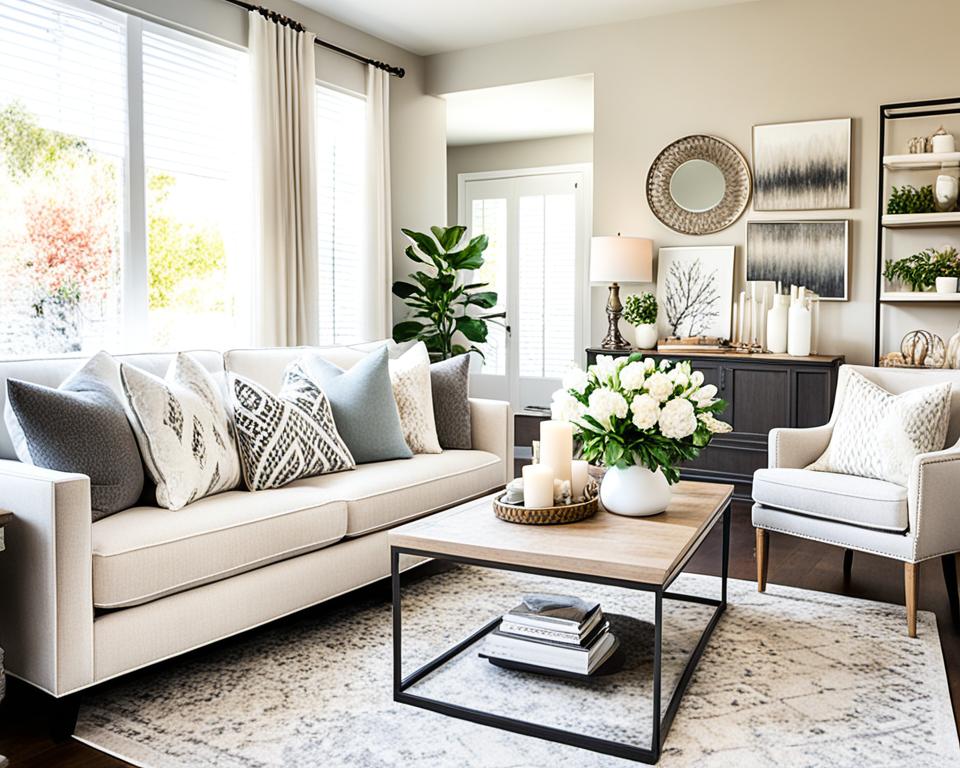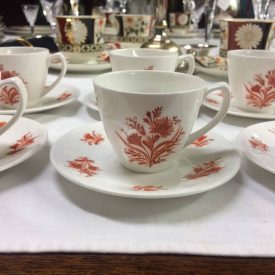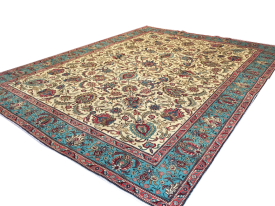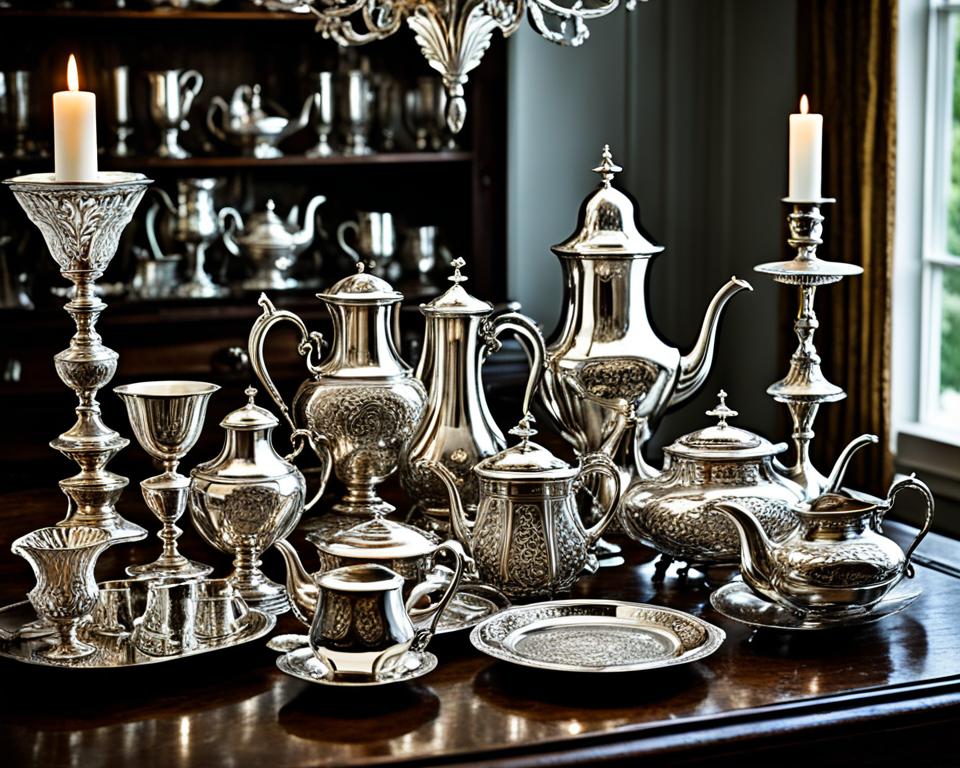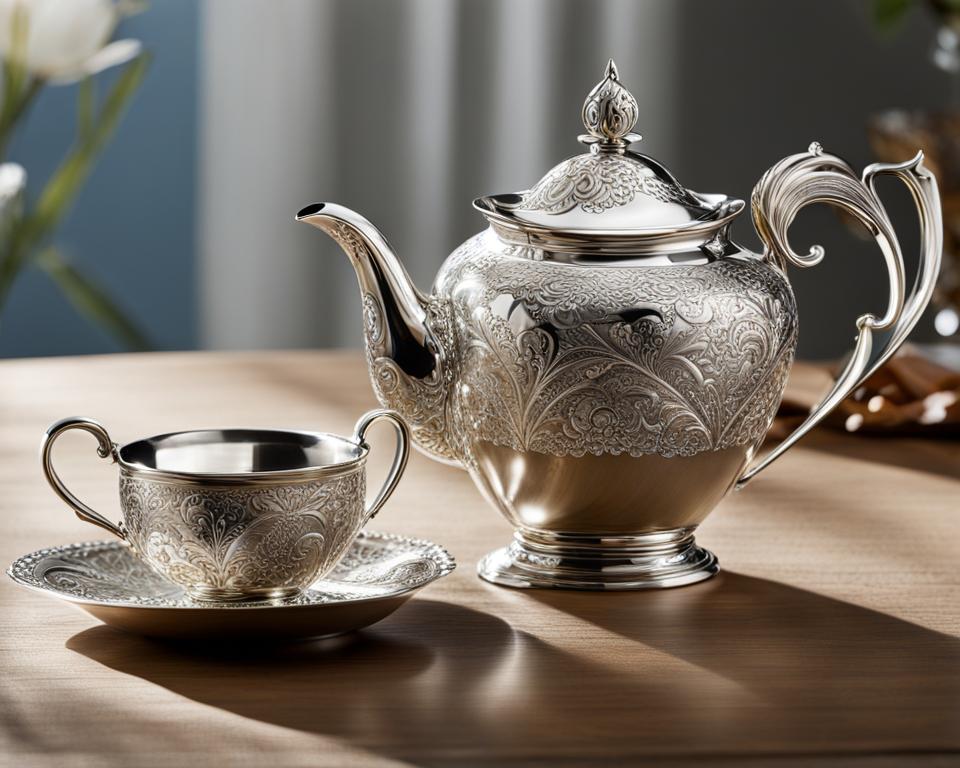Embarking on the journey of home decor can be a daunting task for beginners. With so many design choices and options available, it’s easy to feel overwhelmed. But fear not, with some simple tips and guidance, you can transform your space into a beautiful and inviting haven.
The first principle to keep in mind is to go with what you like and what makes you comfortable. After all, it’s your home, and it should reflect your style and personality. Consider the function of each room and choose colors that resonate with you. Whether you prefer bold and vibrant hues or soothing neutrals, the key is to create a space that feels authentic to you.
Now, let’s dive into the essential elements of home decor for beginners:
Key Takeaways:
- Choose colors that reflect your style and create the desired mood for each room.
- Select furniture that fits the space and consider its functionality and exposure to sunlight.
- Properly arrange furniture to enhance the flow and functionality of the room.
- Pay attention to window treatments for both aesthetics and function.
- Add accent pieces and accessories to personalize and elevate the overall look of your home.
Figure Out Function
Before embarking on a room design project, it’s crucial to determine the function of the space. By understanding how the room will be used, you can make informed choices that optimize both form and function. Consider the needs and preferences of the occupants, as well as the specific activities that will take place in the room.
Considering Room Use
Think about who will be using the room and how it will be utilized. Consider factors such as age, lifestyle, and interests. For example, a family room may need to accommodate children, pets, and various entertainment activities. On the other hand, a home office requires a quiet and organized environment conducive to work. Understanding the room’s purpose will guide your design decisions and ensure that the space meets the needs of its users.
Assessing Traffic Patterns
Another crucial aspect to consider is the traffic flow within the room. Analyze how people will move through the space and arrange furniture to facilitate easy movement. You want to avoid creating obstacles or bottlenecks that hinder the natural flow of traffic. By optimizing traffic patterns, you can enhance the overall functionality of the room.
Choosing Suitable Flooring
The choice of flooring is also essential in rooms with different functions. Consider the activities that will take place in the room and select flooring materials that can withstand frequent use and potential wear and tear. For high-traffic areas, such as entryways or kitchens, durable materials like hardwood or tile are ideal. In rooms where comfort is a priority, such as bedrooms or living rooms, carpet or area rugs can add warmth and coziness.
Considering Activities and Lifestyle
Take into account the specific activities and lifestyle of the room’s occupants. If the room will be used for dining or entertaining, consider whether food and drink will be allowed, as this may influence your choice of furniture and finishes. Similarly, if the room will be used for hobbies or gym workouts, you may need to incorporate storage solutions or specialized equipment.
Accommodating Children and Pets
If children or pets will be regular occupants of the room, you’ll need to make design choices that can withstand their presence. Opt for easy-to-clean surfaces and consider furniture fabrics that are resistant to stains and pet hair. It’s also important to create a safe environment by securing furniture and eliminating potential hazards.
Creating a Functional and Beautiful Space
By carefully considering the function of a room, you can design a space that not only meets your needs but is also aesthetically pleasing. Every element, from the layout to the choice of materials, should contribute to the overall harmony and functionality of the space.
| Key Considerations for Determining Room Function |
|---|
| Identify the needs and preferences of the room’s occupants |
| Think about the specific activities that will take place in the room |
| Assess the traffic patterns within the space |
| Choose flooring materials that can withstand the room’s use |
| Consider how children and pets will influence the room’s function |
Commit to Color
Choosing the right colors for your home decor can be one of the most challenging decisions. However, with a little guidance, you can create a harmonious color scheme that enhances the beauty of your space. Professional decorators often follow the “three-color” principle, which involves selecting one neutral color and two accent colors.
To start, consider whether you want the wall color or a piece of furniture to be the focal point of the room. Some decorators prefer to choose the wall color first, as it sets the overall tone and serves as the backdrop for the rest of the decor. Others opt to select a standout piece of furniture and build the color scheme around it. Whichever approach you choose, make sure to consider the size of the room and the desired mood.
Light colors are an excellent choice if you want to make a room appear larger and create a cool, airy ambiance. They reflect natural light, making the space feel more open and expansive. On the other hand, darker colors can bring an intimate and cozy feel to the room. They add warmth and depth, making it a perfect choice for creating a comfortable atmosphere.
When it comes to accent colors, think about the color wheel and choose complementary hues that create a balanced and visually appealing look. Accent colors can be introduced through smaller elements such as throw pillows, decorative accessories, or artwork, adding pops of color and personality to the room.
“Choosing the right color scheme can bring a sense of harmony and cohesion to your home decor.”
Remember, the color scheme you choose should reflect your personal style and preferences. Experiment with different combinations and explore various shades to find the perfect balance that resonates with you.
| Color Scheme | Description |
|---|---|
| Monochromatic | Using variations of a single color for a clean and cohesive look. |
| Analogous | Pairing colors that are next to each other on the color wheel for a harmonious and soothing effect. |
| Complementary | Combining colors that are opposite each other on the color wheel to create a bold and vibrant contrast. |
| Triad | Using three colors that are equally spaced on the color wheel to achieve a vibrant and dynamic look. |
The right color scheme has the power to transform your space, evoke specific emotions, and create a welcoming atmosphere. Don’t be afraid to mix and match colors, experiment with different shades, and let your creativity shine.

Select Furniture that Fits
Choosing the right furniture is a crucial step in creating a well-designed and cohesive space. When selecting furniture, several factors should be taken into consideration to ensure it fits seamlessly into your home decor.
First and foremost, think about the purpose and function of the furniture. Will it be used for relaxation and lounging, or do you need it for dining or working? Understanding how the furniture will be used will help you determine the most suitable pieces.
Another important consideration is the amount of sunlight exposure the furniture will receive. Sunlight can cause fading and damage to certain materials, so it’s essential to choose furniture that can withstand the effects of sunlight. Opt for upholstery fabrics that are fade-resistant or consider using protective covers for furniture that will be exposed to direct sunlight.
Additionally, think about how the color of the furniture will complement the overall color scheme of the room. Harmonizing the colors will create a more cohesive and visually appealing space. For example, if you have a neutral color scheme in the room, you may choose furniture in similar neutral tones or opt for a complementary accent color to add interest.
When it comes to larger furniture pieces like sofas, chairs, or beds, consider selecting solid or tone-on-tone fabrics. These options provide greater flexibility for future updates to the room’s look. You can easily change the appearance of the space by incorporating different accent pieces or a fresh coat of paint without being constrained by heavily patterned or bold upholstery.
Remember, choosing furniture involves both functionality and aesthetic appeal. By considering the purpose, sunlight exposure, color scheme, and upholstery options, you can select furniture that not only fits your space but also enhances the overall design.
| Furniture Consideration | Key Points |
|---|---|
| Function and Purpose | Choose furniture that aligns with the intended use of the space. |
| Sunlight Exposure | Consider the amount of sunlight the furniture will be exposed to and select materials that can withstand fading. |
| Color Scheme | Ensure the furniture’s color complements the overall color scheme of the room for a cohesive look. |
| Upholstery Options | Opt for solid or tone-on-tone fabrics for larger furniture pieces, allowing for easier updates to the room’s look. |
Note: This table provides a summary of the key considerations when selecting furniture for your home decor.
Proper Positioning
Arranging furniture in a room requires careful consideration of traffic patterns and the desired function of the space. By employing a room template, you can visualize various furniture arrangements and discover the perfect combination for your room. The proper positioning of furniture not only enhances the flow of the room but also improves its functionality.
Creating a Room Template
Before you start arranging furniture, it can be helpful to create a room template. This template gives you a clear visual representation of the room’s dimensions, allowing you to experiment with different placement options without needing to move heavy furniture around. To create a room template, measure the dimensions of your room and draw a scaled floor plan on graph paper or use an online room planner tool.
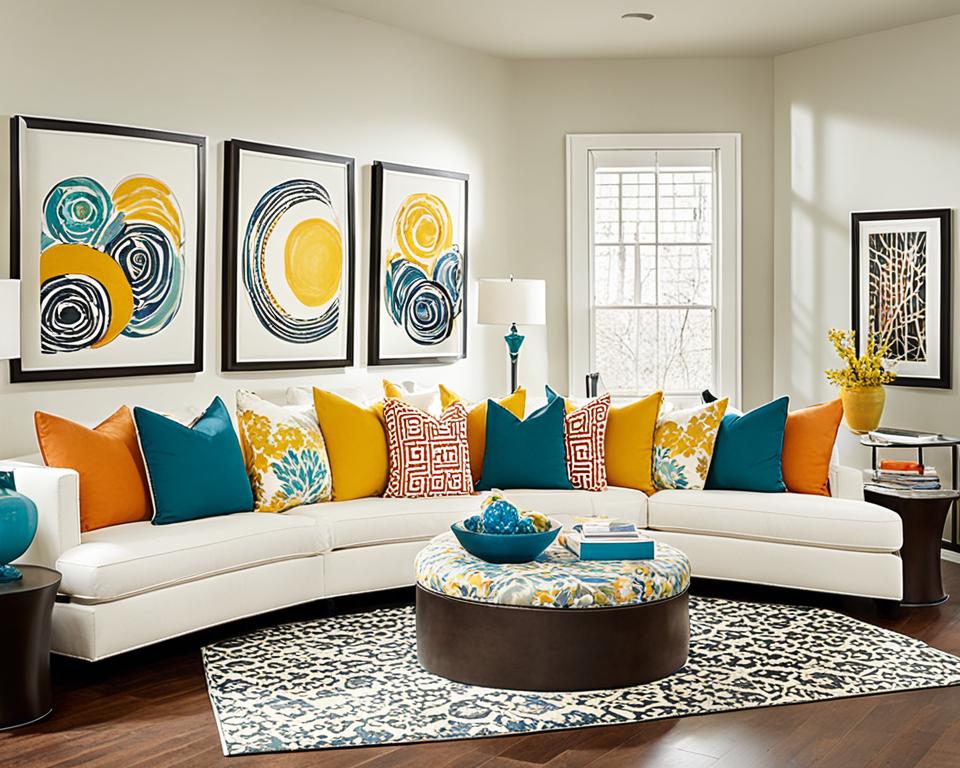
Inspired by your room template, you can now try out different furniture layout options. Experiment with multiple arrangements until you find the one that maximizes both the functionality and visual appeal of the room.
Consider Traffic Patterns
When arranging furniture, it’s crucial to consider traffic patterns within the room. Traffic patterns are the paths people naturally take when moving through a space. To ensure a smooth flow, leave clear pathways between furniture pieces, allowing ample space for people to walk without obstruction. Avoid placing furniture in areas where it interrupts the natural traffic flow.
Create Conversation Areas
Another important aspect of furniture arrangement is creating conversation areas. These designated areas promote social interaction and make the room more inviting. To create a conversation area, place seating arrangements in a way that encourages face-to-face conversation. Consider using a focal point such as a fireplace or television as a central anchor for the seating arrangement.
Proper positioning of furniture can significantly impact the overall functionality and aesthetic appeal of a room. By considering traffic patterns, creating a room template, and designing conversation areas, you can arrange your furniture in a way that not only enhances the flow of the room but also creates a welcoming and comfortable space for everyone.
Window Embellishments
Window treatments go beyond adding color to a room; they also serve functional purposes. When choosing window treatments, it’s important to consider the desired light control, privacy, and the view outside. Whether you want to block out the light or showcase the scenic landscape, your window treatments play a crucial role in achieving the perfect balance.
With window treatments, you can control the amount of natural light that enters a room. This is especially important in spaces like bedrooms and living rooms, where light control can enhance sleep quality or create a cozy ambiance during movie nights. Blinds, shades, curtains, or drapes can be adjusted to filter or block the sunlight, based on your preference.
Privacy is another crucial consideration when it comes to window treatments. Depending on the location of your home and the proximity of neighboring buildings, you may want to ensure privacy during certain times of the day. Opting for heavier curtains or blinds with blackout features can provide the necessary privacy without compromising on style.
The view from your windows adds beauty and character to your space. If you have a stunning landscape or an architectural gem outside, consider window treatments that frame and highlight the view. Sheer curtains, valances, or blinds with a higher amount of transparency can help showcase the scenery while still allowing natural light to filter through.
When it comes to choosing the right window treatments for your home, it’s essential to strike a balance between functionality and aesthetics. Valence window treatments can be an excellent choice as they not only enhance the interior style of your home but also offer practical benefits. Valences can be created using existing fabrics and materials, providing a stylish and budget-friendly solution to elevate your windows.
| Benefit | Window Treatment Options |
|---|---|
| Light Control | Blinds, shades, curtains, drapes |
| Privacy | Heavier curtains, blinds with blackout features |
| View Showcase | Sheer curtains, valances |
| Enhanced Style | Valences created using existing fabrics and materials |
Alluring Accents
Accent pieces, artwork, and accessories are essential elements of home decor that add personality and style to a room. By carefully selecting and placing these decorative items, you can create an inviting and personalized space that showcases your unique taste and reflects your personality.
One of the advantages of accent pieces is that they can be used to disguise flaws in a room or make it seem larger. For example, in small rooms, well-placed mirrors can create an illusion of space and depth. Similarly, artwork with perspective or depth can make a room feel more expansive.
When choosing accent pieces, consider the overall color scheme and style of the room. Select pieces that complement the existing decor and enhance the desired atmosphere. Whether you prefer bold and vibrant accents or subtle and elegant ones, ensure that they harmonize with the room’s overall aesthetic.
Accessories such as throw pillows, rugs, and curtains can also play a significant role in adding character to a room. These items not only provide comfort but can also be used to introduce patterns, textures, and pops of color. Experiment with different combinations to find the perfect balance that suits your taste and personalizes the space.
Brands That Offer Unique Accent Pieces
- West Elm – Known for their contemporary and modern designs, West Elm offers a wide range of accent pieces, including decorative pillows, lamps, and wall art.
- Anthropologie – If you’re looking for eclectic and whimsical accessories, Anthropologie offers a curated selection of unique and artistic pieces that can add a touch of bohemian charm to any room.
- CB2 – For those who prefer a minimalist and modern aesthetic, CB2 offers sleek and stylish accent pieces, such as vases, sculptures, and decorative objects.
Remember, accent pieces, artwork, and accessories are not just decorative elements but opportunities to infuse your personal style into your living space. Have fun exploring different options and creating a room that is truly your own.
Accent pieces, artwork, and accessories are essential for adding personality and character to a room. They not only enhance the overall aesthetic but can also help hide room flaws and make smaller spaces appear larger.
The Simple Home Philosophy
The Simple Home Philosophy is a design approach that celebrates a clutter-free and meaningful living space. It encourages the use of multi-purpose items, smart storage solutions, and the creation of a peaceful sensory experience. By embracing the principles of the Simple Home Philosophy, you can truly personalize your space, making room for the things you love.
The foundation of the Simple Home Philosophy lies in its commitment to simplicity and minimalism. By reducing clutter and unnecessary items, you can create a tranquil environment that promotes relaxation and well-being. Clutter-free spaces not only look visually appealing but also contribute to a clearer mind and improved focus.
One key element of the Simple Home Philosophy is the use of multi-purpose items. These versatile pieces serve multiple functions, maximizing the efficiency of your space. For example, a storage ottoman can provide a place to sit, store blankets, and serve as a coffee table. By investing in multi-purpose items, you can optimize your space without sacrificing style or functionality.
Storage solutions are another essential aspect of the Simple Home Philosophy. Intelligent storage options help keep your space organized and free of clutter. Utilize built-in shelves, baskets, and storage bins to create designated spaces for your belongings. This not only keeps your home tidy but also makes it easier to find and access your items when needed.
A crucial component of the Simple Home Philosophy is the creation of a sensory experience. Pay attention to the textures, scents, and sounds within your home. Incorporate elements like soft fabrics, natural materials, and calming aromas to enhance the overall ambiance of your space. By engaging multiple senses, you can create a space that is not only visually appealing but also promotes relaxation and well-being.
In summary, the Simple Home Philosophy embraces the principles of simplicity, minimalism, and functionality. By adopting this design approach, you can create a clutter-free and harmonious living space that reflects your personality and values. Incorporate multi-purpose items, employ smart storage solutions, and curate a sensory experience to transform your home into a sanctuary of peace and tranquility.
Conclusion
Creating a beautiful and functional home doesn’t have to be overwhelming for beginners. By following these essential elements of home decor, you can transform your space with ease. Consider the function of each room, choose colors that reflect your style, select furniture that fits the space, and arrange it properly.
Pay attention to window treatments, accent pieces, and accessories that make the room personal and inviting. Eliminate clutter, create a peaceful, sensory experience, and make room for the things you love. With these beginner tips and interior design basics, you can create a simple and stylish home that reflects your personality.
Incorporate the simple home philosophy, which focuses on creating a clutter-free and meaningful living space. Utilize multi-purpose items and storage solutions to maximize space and maintain organization. Bring in accent pieces, artwork, and accessories to add personality and make the room more inviting. By following these tips, you can create a harmonious living environment that promotes comfort and joy.
FAQ
What are some basic tips for beginner home decorators?
Some basic tips for beginner home decorators include choosing colors that reflect your style, selecting furniture that fits the space, arranging furniture properly, paying attention to window treatments, and adding accent pieces and accessories to personalize the room.
How do I determine the function of a room before decorating?
Before decorating a room, it’s important to consider who will use the room and how it will be used. Think about traffic patterns, the need for durable flooring, whether food and drink will be allowed, and the activities that will take place in the room.
How do I choose the right colors for my home decor?
When choosing colors for your home decor, consider starting with a neutral color as a backdrop and then selecting two accent colors. Think about the size of the room and the desired mood – light colors can make a room seem larger and cooler, while darker colors can create a cozy, warm atmosphere.
What should I consider when selecting furniture for my home?
When selecting furniture, consider its use, how much sunlight it will be exposed to, and how it fits into the overall color scheme of the room. Solid or tone-on-tone fabrics for larger furniture pieces allow for easier changes to the room’s look through accent pieces or a new coat of paint.
How do I arrange furniture properly in a room?
When arranging furniture, consider traffic patterns and the desired function of the room. Creating a room template can help visualize different furniture arrangements and find the perfect combination. Proper positioning of furniture can enhance the flow of the room and make it more functional.
What should I consider when choosing window treatments?
When choosing window treatments, consider how much light and privacy you want in the room and whether you want to block or showcase the view outside. Valence window treatments can enhance the interior style of your home and can be created using existing fabrics and materials.
How can accent pieces and accessories enhance my home decor?
Accent pieces, artwork, and accessories add personality and make a room more inviting. They can also be used to disguise flaws in a room or make it seem larger. Small rooms can benefit from well-placed mirrors or paintings with depth, and accent pieces can showcase your style and personality in entryways and other areas.
What is the Simple Home design philosophy?
The Simple Home design philosophy focuses on creating a clutter-free and meaningful living space. It emphasizes the use of multi-purpose items, proper storage solutions, and a peaceful, sensory experience. The Simple Home allows you to incorporate your personality and interests into your space and make room for the things you love.
How can I create a simple and stylish home as a beginner?
To create a simple and stylish home as a beginner, consider the function of each room, choose colors that reflect your style, select furniture that fits the space, arrange it properly, pay attention to window treatments, and add accent pieces and accessories to personalize the room. The Simple Home philosophy can also help you create a clutter-free and meaningful living space.

